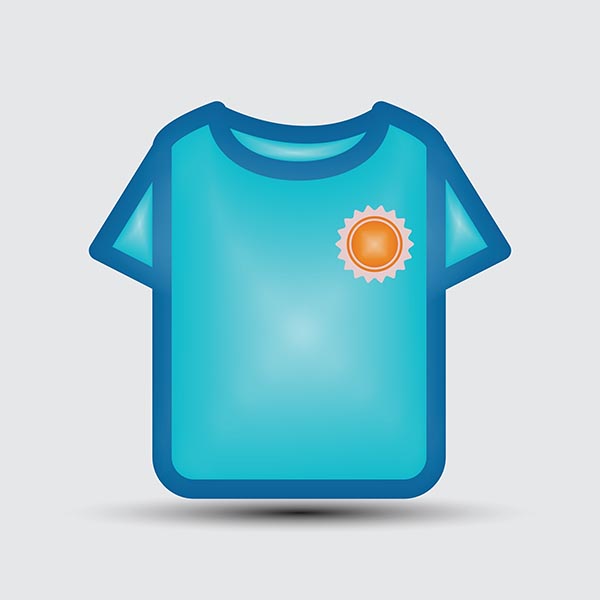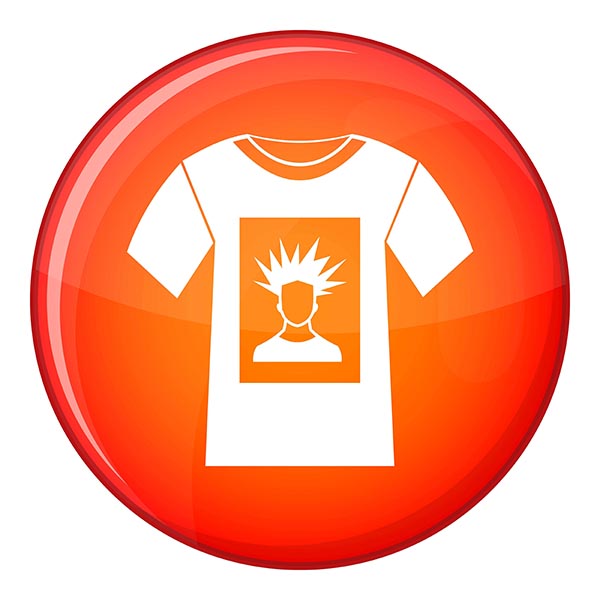In recent months, we have seen a number of printer manufacturers jump into the digital direct-to-film (DTF) market, some with equipment dedicated to that application, and others hybrid DTF/DTG (direct-to-garment) solutions. One of the earlier entries was Ricoh, with its Ri1000 and R12000 hybrid printers, which we covered last year.
More recently, UK-based research firm WTIN posted an informative article on this topic. They state, “DTF’s popularity as a garment decoration technique has grown enormously in its short lifetime. When working smoothly, the DTF process is an excellent, cost-effective and rapid manufacturing process for garment decoration. However, the technology is not without its challenges.”
How DTF Works
In a recent article contributed by Texintel, textiles expert and WhatTheyThink contributor Debbie McKeegan explains the process:
In simplistic terms, the DTF print process starts with printing images using water-based pigment inks on polyethylene terephthalate (PET) film. Because it has to be transferred, the image is printed in reverse. Once inkjetted, the wet print is powdered with a hot melt (polyamide) adhesive and finally cured. Once cured, the image can be transferred onto a garment using a standard heat press.
Most experts agree that image transfer using the DTF process is best suited for smaller graphics, such as a T-shirt logo, an image on a hat, bag, sneakers, or other items. While DTG printing has a more natural feel and is breathable because inks are absorbed into the fabric fibers with most DTG processes, DTF sits on top of the fibers and can have a plasticky feel. Because it is not breathable, the garment is not comfortable and would not be an attractive purchase for most people.

DTF is best suited for smaller graphics, such as the logo shown here, especially for apparel.

DTG is better suited for larger graphic items, especially for apparel.
On the positive side, DTF has lower ink consumption, often a lower equipment price, and can also be used on most fabrics. It is also highly durable. Also, you can, for example, print a whole sheet of logos, and then apply them to items on demand as needed, so there is a production convenience there. One example would be demonstrating DTF at a trade show where you want to show visitors exactly how the prepared image on film is applied, producing logo’d giveaways on demand at an event, or keeping logos in stock for a retail customer who orders uniforms when a new employee is hired, often one at a time.
I find it interesting that most of the demos you see show preparing the file (reverse image) and applying the ink to the film, but skip right over the next two steps: applying the polyamide powder and baking the film. When you dig into that part of the process, it’s not quite as friendly as it seems. Some manufacturers recommend taking the wet ink film to a shaker, pouring on the powder, and shaking off the excess. Others are coming out with contained units where the wet film is passed through a closed unit where the powder is applied and the excess shaken off. The final step requires an oven for baking the powder onto the film. All of this can still be cost-effective, but all parts of the process need to be taking into consideration. As with many applications, purchasing the printer is only the first step.
Is Polyamide Powder Toxic?
I ask this question because I spoke to a few DTG producers who have opted not to bring DTF in-house, with the belief that the fine polyamide powder particles cannot be contained during the process and workers risk health issues if the powder is inhaled. They have instead opted to outsource DTF production.
According to a study published earlier this year by the National Library of Medicine, this could, in fact, be true. The study was conducted using rats, not humans, but the conclusions were a bit alarming, and included “increased blood pressure and impaired dilation in the uterine vasculature.” The study went on to conclude: “These data demonstrate aerosolization of MNPs in our inhalation exposure platform. Inhaled MNP aerosols were found to alter inflammatory, cardiovascular, and endocrine activity. These novel findings will contribute to a better understanding of inhaled plastic particle toxicity.” MNP’s are micro- and nanoplastic particles, of which polyamide (also referred to in the literature as nylon) is one.
This is certainly an issue to explore with potential vendors and other experts prior to introducing DTF into a facility. Interestingly, this was not raised as an issue in the WTIN article. WTIN also notes, however, that powderless DTF is in late stages of development, with a digitally applied liquid glue that would eliminate the need for the powder process. If you are looking to add DTF to the mix, this is a development well worth watching.
Other Challenges
WTIN did identify other challenges, however, including the issue of white ink viscosity. The article states, “Most DTF hardware has been adapted to cope with the white ink (stirring and re-circulation). However, from an ink development and manufacturing perspective, the ink needs to be developed so that it has “soft settling properties.” This is where any settling pigment forms a soft sedimentation on the bottom of the vessel, which is easy to redisperse back into the bulk liquid. Poor ink formulations will exhibit “hard settle” where a thick sedimentation forms that cannot be re-dispersed. If hard settling occurs in the printer and eventually reaches the printhead, this can cause serious issues and block the tiny inkjet nozzles with oversized particle agglomerates.” Of course, the white ink issue is not new, and as WTIN noted, most printer manufacturers have implemented stirring and recirculation systems to mitigate the issue.
Dedicated or Hybrid?
If you are just getting started with DTG/DTF, a hybrid printer likely makes the most sense, providing more flexibility in a single footprint. If you are a display graphics producer already offering soft signage, this is a logical offering to add, since you already have experience with printing on fabrics, and you presumably have a client base that could use the extra services—and is probably already buying it from someone else.
Check It Out at PRINTED United
If you are planning to attend PRINTING United next month in Atlanta, it will be a great place to take a deep dive into DTF technologies, as there are sure to be many vendors at the show promoting the technology. Hopefully some of the issues raised in this article, and by WTIN, will be good background information, helping you ask the right questions as you make this important decision!













